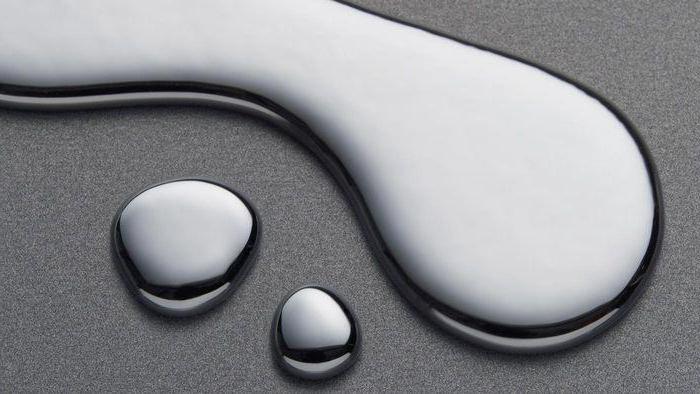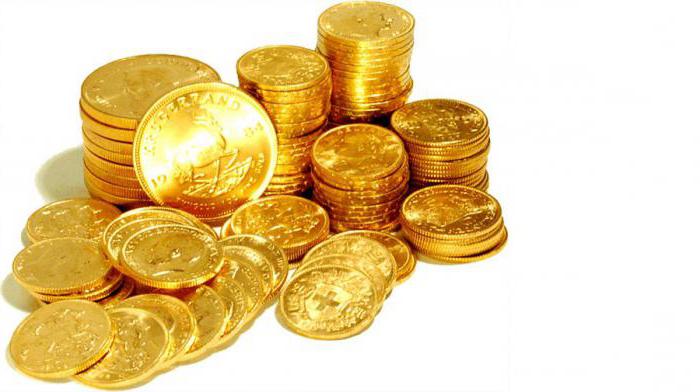Look around for a second ... How many metal things can you see? Usually, when we think about metals, we think of substances that are shiny and durable. However, they are also found in our food and in our bodies. Let's get acquainted with the full list of metals known to science, find out their basic properties and find out why they are so special.
What are metals?
Elements that easily lose electrons, which are shiny (reflective), malleable (can be molded into other forms) and are considered good conductors of heat and electricity, are called metals. They are crucial for our lifestyle, as they are not only part of structures and technologies, but they are also important for the production of almost all objects. There is metal even in the human body. Looking at the label of the composition of multivitamins, you will see dozens of these compounds.
You may not have known that elements such as sodium, calcium, magnesium and zinc are essential for life, and if they are absent in our bodies, our health can be in serious danger. For example, calcium is needed for healthy bones, magnesium for metabolism. Zinc enhances the function of the immune system, and iron helps blood cells carry oxygen throughout the body. However, the metals in our bodies differ from the metal in a spoon or steel bridge in that they lose electrons. They are called cations.
Metals also have antibiotic properties, so railings and handles in public places are often made from these elements. It is known that many tools are made of silver to prevent the growth of bacteria. Artificial joints are made of titanium alloys, which simultaneously prevent infection and make recipients stronger.
Metals in the Periodic Table
All elements in the periodic system of Dmitry Mendeleev are divided into two large groups: metals and non-metals. The first is the largest. Most elements are metals (blue). Non-metals in the table are shown on a yellow background. There is also a group of elements that belong to metalloids (red). All metals are grouped on the left side of the table. Note that hydrogen is grouped with metals in the upper left corner. Despite this, it is considered non-metallic. However, some scientists theorize that there may be metallic hydrogen in the core of the planet Jupiter.
Metal binding
Many of the wonderful and useful qualities of an element are related to how its atoms combine with each other. In this case, certain relationships arise. The metallic interaction of atoms leads to the creation of metallic structures. Any example of this element in everyday life, from a car to coins in your pocket, includes a metal connection.
During this process, metal atoms separate their external electrons evenly with each other. Electrons flowing between positively charged ions easily transfer heat and electricity, making these elements such good conductors of heat and electricity. Copper wires are used for power supply.
Metal reactions
Reactivity refers to the tendency of an element to react with chemicals in its environment. It is different. Some metals, such as potassium and sodium (in columns 1 and 2 in the periodic table), easily react with many different chemicals and are rarely found in their pure, elemental form. Both usually exist only in compounds (associated with one or more other elements) or as ions (a charged version of their elemental form).
On the other hand, there are other metals, they are also called jewelry. Gold, silver and platinum are not very reactive and are usually found in pure form. These metals lose electrons more easily than non-metals, but not as easily as reactive metals such as sodium. Platinum is relatively unreactive and very resistant to reactions with oxygen.
Item Properties
When you studied the alphabet in elementary school, you found that all letters have their own unique set of properties. For example, some had straight lines, some had curves, and others had lines of both types. The same can be said about the elements. Each of them has a unique set of physical and chemical properties. Physical properties are qualities inherent in certain substances. Brilliant or not, how well it conducts heat and electricity, at what temperature it melts, how much density it has.

Chemical properties include those that are observed when reacting with oxygen if they burn (how difficult it will be for them to retain their electrons during a chemical reaction). Various elements may have common properties. For example, iron and copper are both elements that conduct electricity. However, they do not have the same properties. For example, when iron is exposed to moist air, it becomes rusty, but when copper is exposed to the same conditions, it acquires a specific green coating. That is why the Statue of Liberty is green, not rusty. It is made of copper, not iron).
Organization of elements: metals and non-metals
The fact that the elements have some common and unique properties allows you to sort them into a beautiful, neat chart, called a periodic table. It organizes elements based on their atomic number and properties. So, in the periodic table we find elements grouped together that have common properties. Iron and copper are close to each other, both are metals. Iron is indicated by the symbol "Fe", and copper is indicated by the symbol "Cu".

Most elements of the periodic table are metals, and they are usually located on the left side of the table. They are grouped together because they have certain physical and chemical properties. For example, metals are dense, shiny, they are good conductors of heat and electricity, and they easily lose electrons in chemical reactions. In contrast, non-metals have opposite properties. They are not dense, do not conduct heat and electricity, and tend to get electrons, not give them away. When we look at the periodic table, we see that most non-metals are grouped on the right. These are elements such as helium, carbon, nitrogen and oxygen.
What are heavy metals?
The list of metals is quite numerous. Some of them can accumulate in the body and not cause harm to it, such as natural strontium (Sr formula), which is an analogue of calcium, as it is deposited productively in bone tissue. Which of them are called heavy and why? Consider four examples: lead, copper, mercury, and arsenic.
Where are these elements located and how do they affect the environment and human health? Heavy metals are metallic, naturally occurring compounds that have a very high density compared to other metals — at least five times the density of water. They are toxic to humans. Even small doses can lead to serious consequences.

- Lead. It is a heavy metal that is toxic to humans, especially to children. Poisoning with this substance can lead to problems of a neurological nature. Despite the fact that it was once very attractive because of its flexibility, high density and ability to absorb harmful radiation, lead was withdrawn from use in many ways. This soft silver metal that is found on Earth is dangerous for people and accumulates in the body over time. The worst thing is that you can not get rid of it. He sits there, accumulates and gradually poisons the body. Lead is toxic to the nervous system and can cause serious brain damage in children. It was widely used in the 1800s to create makeup and until 1978 was used as one of the ingredients in hair dye. Today, lead is mainly used in large batteries, as screens for X-rays or insulation for radioactive material.
- Copper. It is a tan heavy metal that has many uses. Copper is still one of the best conductors of electricity and heat, and many electrical wires are made of this metal and coated with plastic. Coins, basically a trifle, also make from this element of the periodic system. Acute copper poisoning is rare, but, like lead, it can accumulate in the tissues, which ultimately leads to toxicity. People who are exposed to large amounts of copper or copper dust are also at risk.
- Mercury. This metal is toxic in any form and can even be absorbed by the skin. Its uniqueness lies in the fact that it is liquid at room temperature, it is sometimes called "fast silver". It can be seen in the thermometer, because it absorbs heat as a liquid, changing the volume even with the slightest difference in temperature. This allows mercury to rise or fall in a glass tube. Since this substance is a powerful neurotoxin, many companies are switching to alcohol thermometers, painted in red.
- Arsenic. From the time of the Roman Empire until the Victorian era, arsenic was considered the “king of poisons”, as well as the “poison of kings. The story is riddled with countless examples of both royal persons and ordinary people who commit murders for personal gain, using arsenic compounds that have no smell, color, or taste. Despite all the negative effects, this metalloid also has its own fields of application, even in medicine. For example, arsenic trioxide is a very effective drug used to treat people with acute promyelocytic leukemia.
What is a precious metal?
Precious metal is a metal that can be rare or difficult to mine, and also very economically valuable. What is the list of precious metals? There are three of them:
- Platinum. Despite its refractoriness, it is used in jewelry, electronics, automobiles, in chemical processes, and even in medicine.
- Gold. This precious metal is used to make jewelry and gold coins. However, it has many other uses. It is used in medicine, manufacturing and laboratory equipment.
- Silver. This noble silver-white metal is very malleable. in its pure form is quite heavy, it is lighter than lead, but heavier than copper.
Metals: types and properties
Most elements can be considered as metals. They are grouped in the middle on the left side of the table. Metals are alkaline, alkaline earth, transition, lanthanides and actinides.
All of them have several common properties, these are:
- solid at room temperature (excluding mercury);
- usually brilliant;
- with a high melting point;
- good conductor of heat and electricity;
- with low ability to ionize;
- with low electronegativity;
- malleable (able to take a given shape);
- plastic (can be pulled into the wire);
- with high density;
- a substance that loses electrons in reactions.
List of metals known to science
- lithium;
- beryllium;
- sodium;
- magnesium;
- aluminum;
- potassium;
- calcium;
- scandium;
- titanium;
- vanadium;
- chromium;
- manganese;
- iron;
- cobalt;
- nickel;
- copper;
- zinc;
- gallium;
- rubidium;
- strontium;
- yttrium;
- zirconium;
- niobium;
- molybdenum;
- technetium;
- ruthenium;
- rhodium;
- palladium;
- silver;
- cadmium;
- indium;
- copernia;
- cesium;
- barium;
- tin;
- iron;
- bismuth;
- lead;
- mercury;
- tungsten;
- gold;
- platinum;
- osmium;
- hafnium;
- germanium;
- iridium;
- niobium;
- rhenium;
- antimony;
- thallium;
- tantalum;
- France
- liverworm.
In total, about 105 chemical elements are known, most of which are metals. The latter are a very common element in nature, which occurs both in pure form and in the composition of various compounds.
Metals lie in the bowels of the earth, they can be found in various reservoirs, in the bodies of animals and humans, in plants and even in the atmosphere. In the periodic system, they are located starting with lithium (metal with the formula Li) and ending with liverworm (Lv). She continues to replenish the table with new elements, and these are mainly metals.